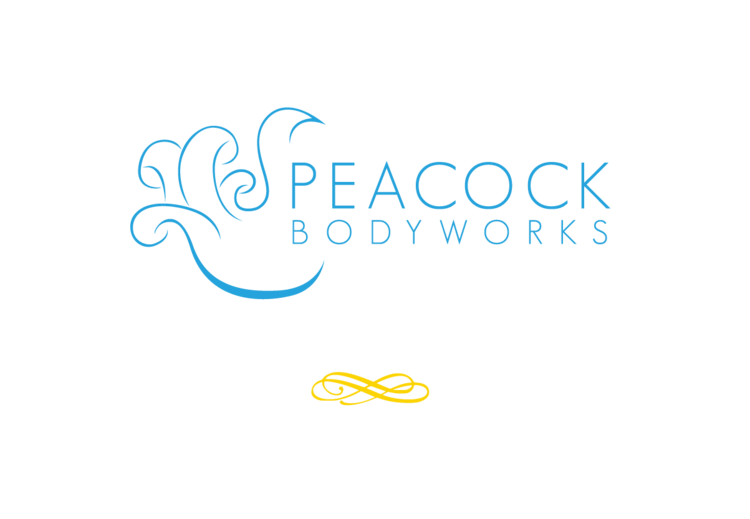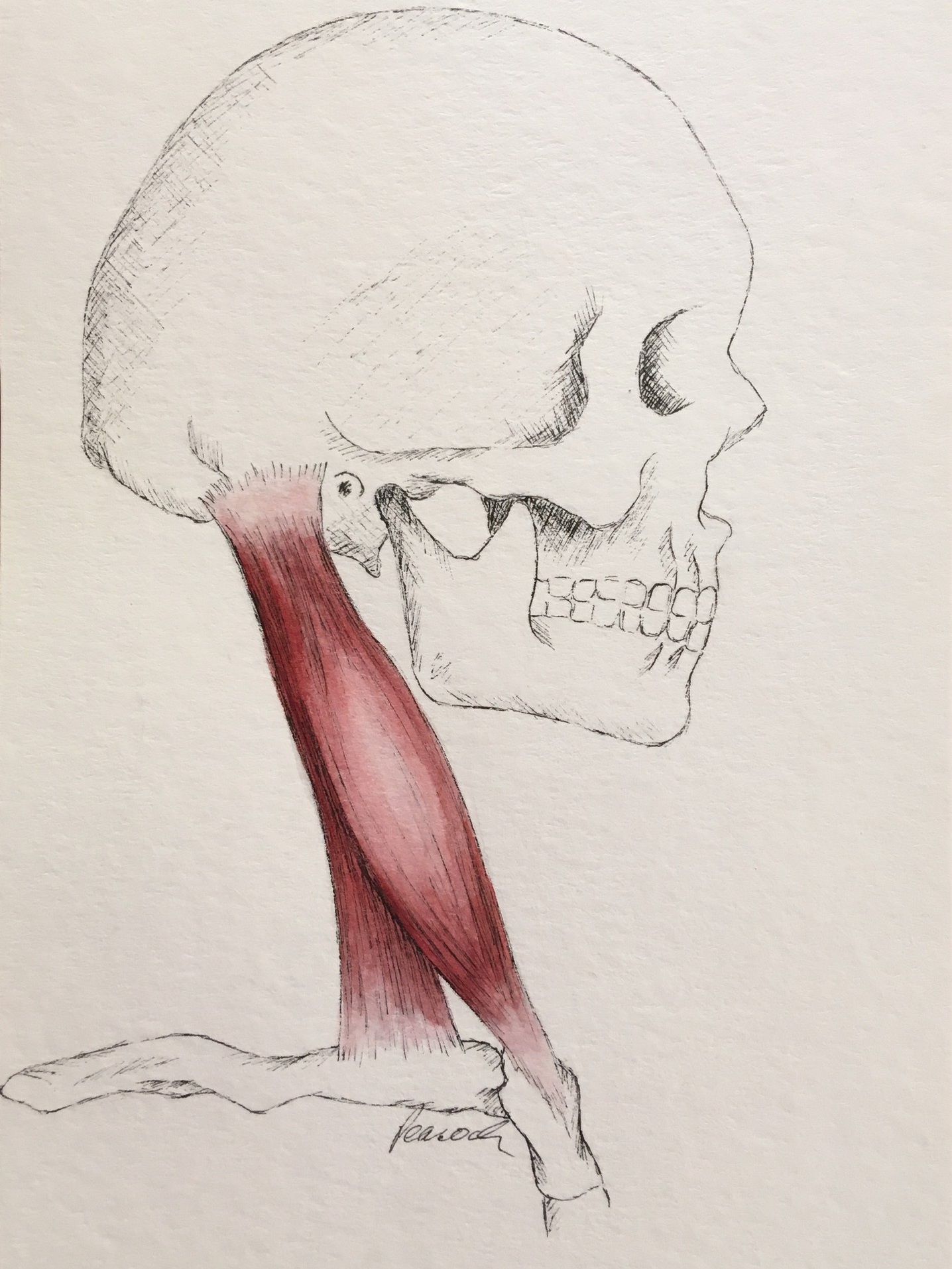The Sternocleidomastoid or SCM is one of the most important muscles of the anterior neck. It has two heads, one of which attaches to the top of the sternum (breast bone) while the other attaches on the clavicle (collar bone). These two heads join into one muscle and insert on the mastoid process of the temporal bone which is behind the ear. There is one SCM on each side of the neck and they can work either together (bilaterally) or individually (unilaterally). Working unilaterally, the SCM rotates the head and neck to the opposite side and bends the neck to the same side. Working bilaterally, the SCMs bend the neck forward, bringing the chin towards the chest.
This is another muscle that is often ignored by massage therapists because it is awkward to massage and can be very tender. Most people that I see have never had this muscle worked on before visiting my office! While it is not common to experience pain in the front of the neck, trigger points in the SCM can send pain to the head, eyes, ears, and jaw. A tight SCM can also severely limit range of motion in the neck. The SCM may be stressed by keeping the head in a position of looking up or to the side for an extended period of time or by sleeping with too many pillows. It may even be strained by holding the head too far forward (such as while looking at a computer or mobile phone) which requires the SCM to support much of the weight of the head.
The SCM is almost always injured in acceleration/ deceleration incidents such as whiplash. Because it contributes significantly to three out of the four major motions of the neck, it is very important to seek care after any whiplash-like incident, even minor car accidents and falls. I recommend seeing a chiropractor immediately after any such injury for a thorough evaluation and then quickly beginning a series of massage sessions to address any injury to the SCM.
The SCM is one of the easiest muscles to massage yourself. This video will give you a good idea of how to massage your SCM. I recommend that you try this while lying down with the head supported so that the SCM is relaxed. It is not possible to pick up arteries, veins, or nerves while massaging the SCM so don’t worry about causing injury to those structures. If, however, you find that you can feel your pulse in a certain area, move you fingers away to ensure that you are not pressing on an artery. When you finish your self-massage, give this stretch a try - you might be surprised how much better you feel after stretching the front of your neck!
If you are experiencing headaches, jaw pain, or a limited range of motion in your neck, it’s time to schedule your next massage!

